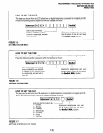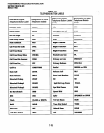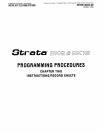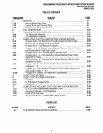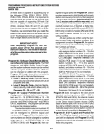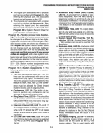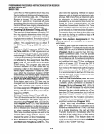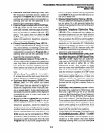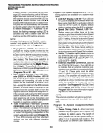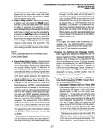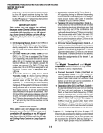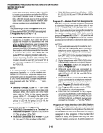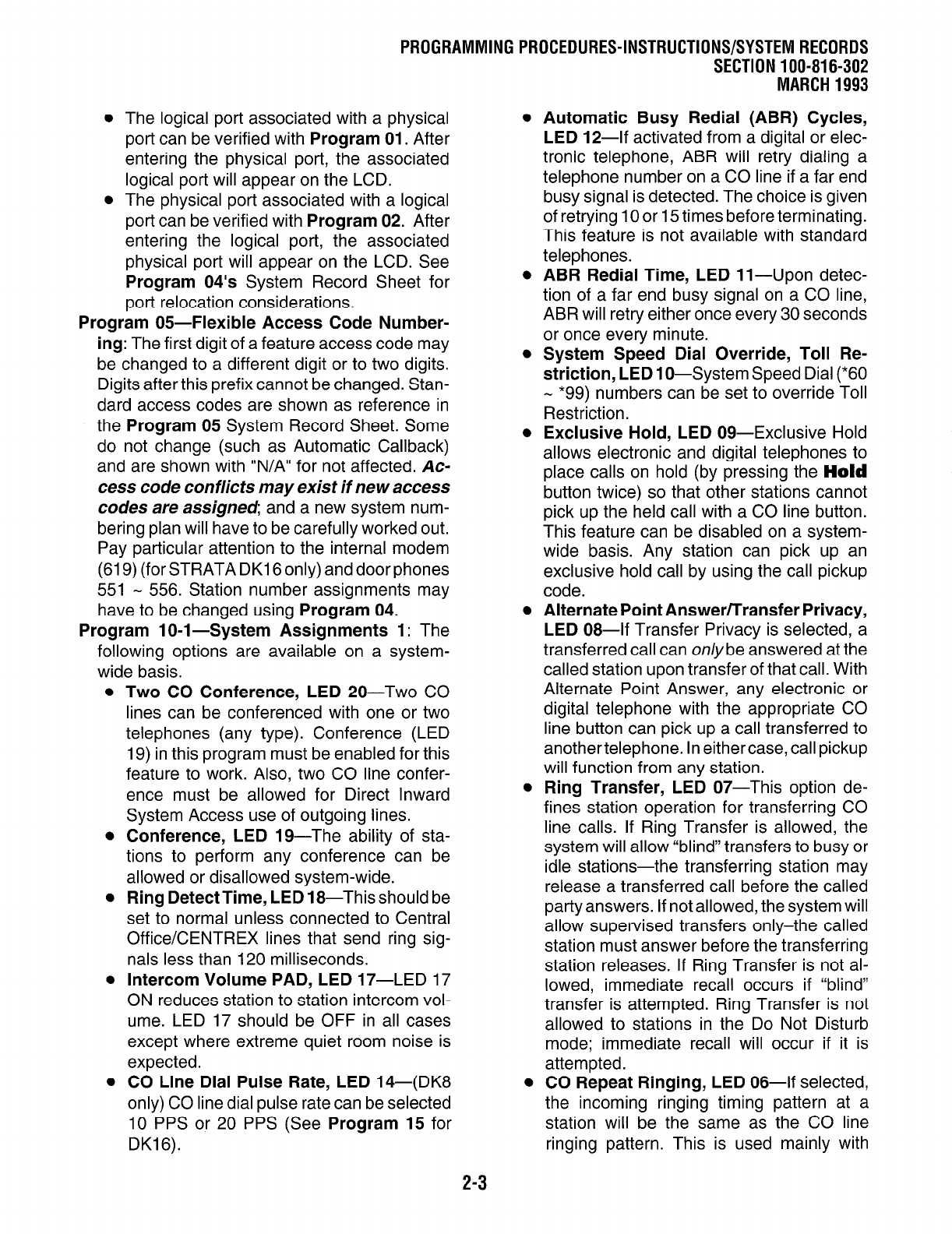
The logical port associated with a physical
port can be verified with Program 01. After
entering the physical port, the associated
logical port will appear on the LCD.
The physical port associated with a logical
port can be verified with Program 02. After
entering the logical port, the associated
physical port will appear on the LCD. See
Program 04’s System Record Sheet for
port relocation considerations.
Program 05-Flexible Access Code Number-
ing: The first digit of a feature access code may
be changed to a different digit or to two digits.
Digits after this prefix cannot be changed. Stan-
dard access codes are shown as reference in
the Program 05 System Record Sheet. Some
do not change (such as Automatic Callback)
and are shown with “N/A” for not affected. Ac-
cess code conflicts may exist if new access
codes are assigned; and a new system num-
bering plan will have to be carefully worked out.
Pay particular attention to the internal modem
(619) (for STRATA DK16 only) and door phones
551 - 556. Station number assignments may
have to be changed using Program 04.
Program 1 O-l-System Assignments 1: The
following options are available on a system-
wide basis.
Two CO Conference, LED SO-Two CO
lines can be conferenced with one or two
telephones (any type). Conference (LED
19) in this program must be enabled for this
feature to work. Also, two CO line confer-
ence must be allowed for Direct Inward
System Access use of outgoing lines.
Conference, LED 19-The ability of sta-
tions to perform any conference can be
allowed or disallowed system-wide.
Ring Detect Time, LED 18-This should be
set to normal unless connected to Central
Office/CENTREX lines that send ring sig-
nals less than 120 milliseconds.
Intercom Volume PAD, LED 17-LED 17
ON reduces station to station intercom vol-
ume. LED 17 should be OFF in all cases
except where extreme quiet room noise is
expected.
CO Line Dial Pulse Rate, LED 14-(DK8
only) CO line dial pulse rate can be selected
10 PPS or 20 PPS (See Program 15 for
DK16).
2-3
SECTION 100-816-302
MARCH 1993
Automatic Busy Redial (ABR) Cycles,
LED 12-If activated from a digital or elec-
tronic telephone, ABR will retry dialing a
telephone number on a CO line if a far end
busy signal is detected. The choice is given
of retrying 10 or 15 times before terminating.
This feature is not available with standard
telephones.
ABR Redial Time, LED II-Upon detec-
tion of a far end busy signal on a CO line,
ABR will retry either once every 30 seconds
or once every minute.
System Speed Dial Override, Toll Re-
striction, LED 1 O-System Speed Dial (*60
- *99) numbers can be set to override Toll
Restriction.
Exclusive Hold, LED 09-Exclusive Hold
allows electronic and digital telephones to
place calls on hold (by pressing the Hold
button twice) so that other stations cannot
pick up the held call with a CO line button.
This feature can be disabled on a system-
wide basis. Any station can pick up an
exclusive hold call by using the call pickup
code.
Alternate Point Answer/Transfer Privacy,
LED 08-If Transfer Privacy is selected, a
transferred call can only be answered at the
called station upon transfer of that call. With
Alternate Point Answer, any electronic or
digital telephone with the appropriate CO
line button can pick up a call transferred to
anothertelephone. In eithercase, call pickup
will function from any station.
Ring Transfer, LED 07-This option de-
fines station operation for transferring CO
line calls. If Ring Transfer is allowed, the
system will allow “blind” transfers to busy or
idle stations-the transferring station may
release a transferred call before the called
party answers. If not allowed, the system will
allow supervised transfers only-the called
station must answer before the transferring
station releases. If Ring Transfer is not al-
lowed, immediate recall occurs if “blind”
transfer is attempted. Ring Transfer is not
allowed to stations in the Do Not Disturb
mode; immediate recall will occur if it is
attempted.
CO Repeat Ringing, LED 06-If selected,
the incoming ringing timing pattern at a
station will be the same as the CO line
ringing pattern. This is used mainly with



